Stanford Memorial Church
Introduction
Text-to-speech Audio
Images
Stanford's Memorial Church sits on the university's main quad and has done so since 1903.
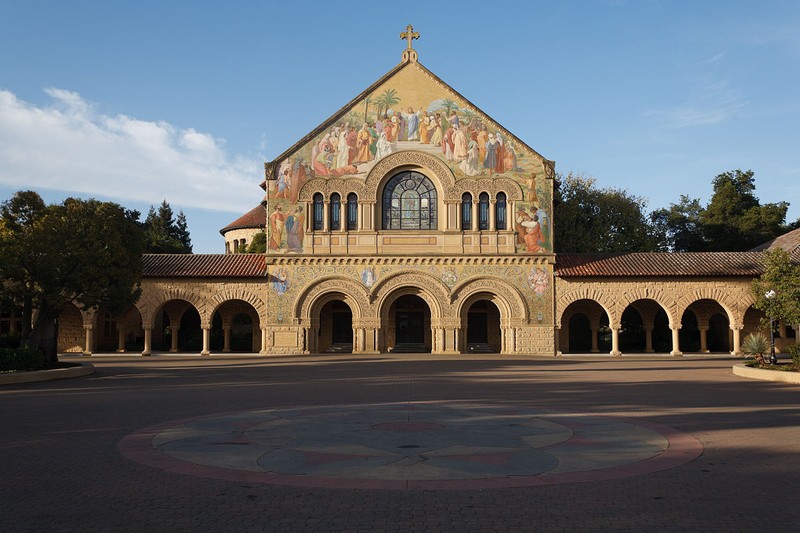
A view of the church's nave looking toward the chancel.
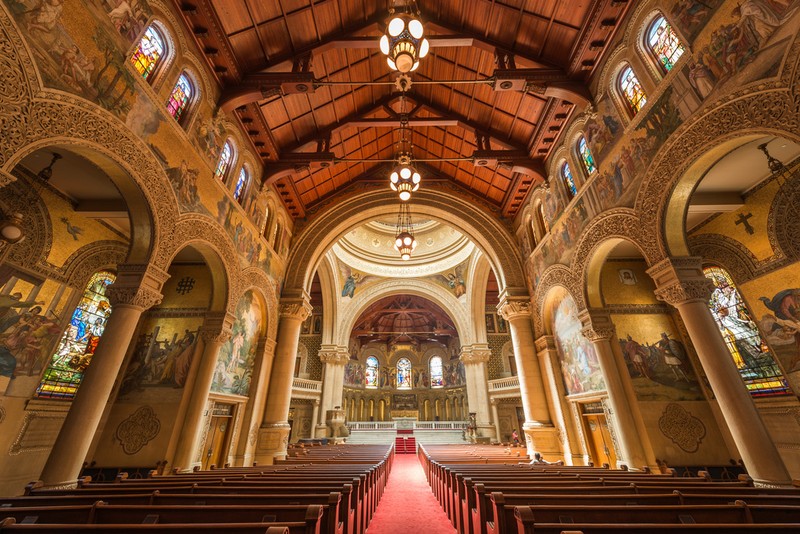
A close-up of the church's famous exterior mosaic located on its front façade.
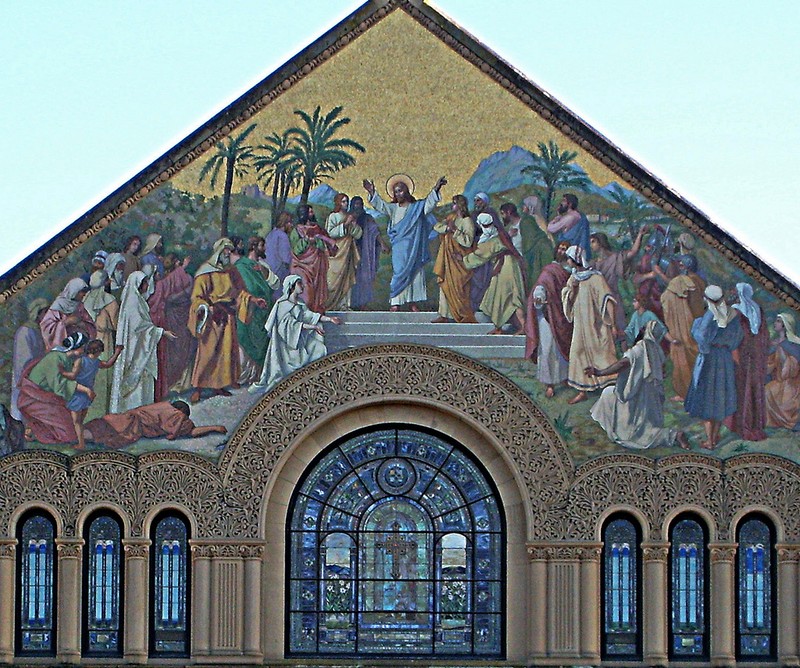
The church as it looked prior to the Great San Francisco Earthquake of 1906.
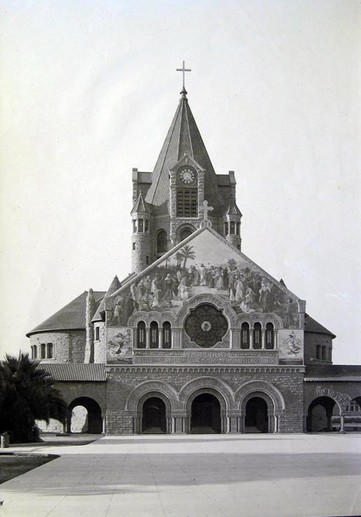
And the damage wrought by the 1906 quake.
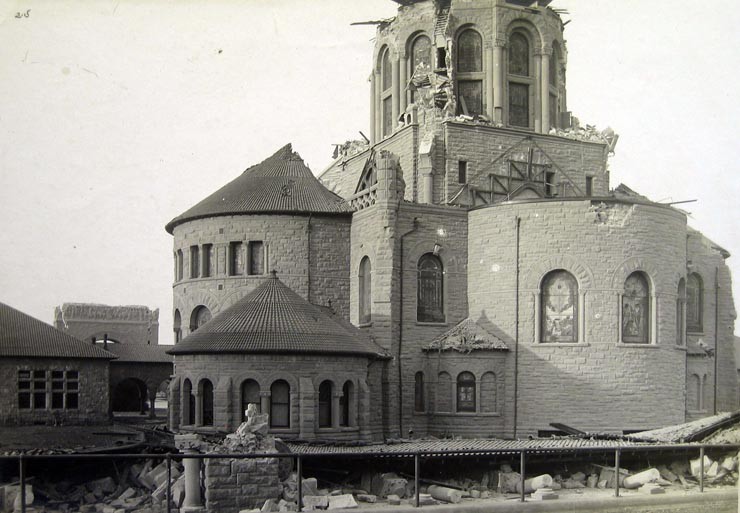
Backstory and Context
Text-to-speech Audio
Stanford University was founded in 1885 as a memorial to Leland Stanford Jr., son of Jane and Leland Sr., who died the previous year at the age of 15. The Stanford’s donated approximately $40 million to the university and, when Leland Sr. died in 1893, his wife sought to create an appropriate memorial on the university’s campus for her late husband. The result was Stanford Memorial Church. Jane Stanford sought to “…secure the religious needs of the university in a non-sectarian manner.” And while the cruciform design of and religious symbolism within the church certainly focuses on Christianity, it was and still is a non-denominational church.
Designs for the church were drawn up by Charles Coolidge in 1898, ground was broken in 1899 and the church was dedicated in 1903. The Stanfords had previously traveled extensively throughout Europe and were greatly influenced by the city of canals, Venice, Italy. As a result, Jane requested that the church reflect those influences. She contracted with Venetian artists, Maurizio Camerino and Antonio Paoleti, to design the majestic mosaics that grace both the church’s interior and exterior and employed J. & R. Lamb of New York City to create its numerous stained glass windows.
Unfortunately, the original church was almost completely destroyed by the Great San Francisco Earthquake of 1906. Its 80-foot clock tower fell in on the chancel roof destroying much within, most of its walls cracked, and the front façade, with its beautiful mosaic, collapsed. Thankfully, Jane Stanford, who died in 1905, did not witness the near destruction of the church. In 1908, reconstruction efforts began on the church, with much of the original sandstone being reused as were the intact stained-glass windows. The church’s crossing was rebuilt with a more stable tiled hipped roof with a large oculus to permit the infusion of natural light. Camerino restored the mosaics and the church was fully restored by 1917. However, it was decided not to replace the clock tower and the original clock now resides in the Stanford Clock Tower.
The new cruciform structure is 190 feet long and 150 feet wide with an arcade, narthex entrance, nave with clerestory above, and a massive crossing with semicircular Romanesque arches. The large exterior mosaic by Paoletti was recreated and was the largest in the country at that time at 80 feet x 30 feet It contains 47 figures and is a veneration of Christ’s Sermon on the Mount. The interior is decorated with more stunning mosaics, paintings, statuary and massive chandeliers that were installed in 1915. Its 20 large stained-glass windows took three years to create and 8 months to install and depict the life of Christ, while the smaller windows feature Biblical figures such as Ruth, Joshua, Abraham and Judith among many others. The church survived the 1989 earthquake with only moderate damage and was closed for structural repairs until 1992.
Sources
Taylor, Joseph. "Memorial Church History." Stanford University. Accessed July 18, 2017. https://religiouslife.stanford.edu/memorial-church/memorial-church-history
Duane, Jack. "Memorial Church: The Non-Sectarian Church." Stanford Review. April 9, 2012. Accessed July 18, 2017. https://stanfordreview.org/memorial-church-the-non-sectarian-church-96b5d9a1673d
"Stanford Memorial Church Self-Guided Tour." Stanford University. Accessed July 18, 2017. http://web.stanford.edu/group/religiouslife/cgi-bin/wordpress/wp-content/uploads/2010/04/MemChuSelf-...
Hall, Willis. "Stanford Memorial Church: the Mosaics, the Windows, the inscriptions." Google Books. 1917. Accessed July 18, 2017. https://books.google.com/books?id=TeAWAAAAIAAJ&pg=PA15&lpg=PA15&dq=stanford+memorial+church&source=b...
